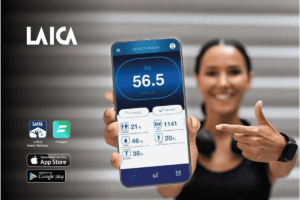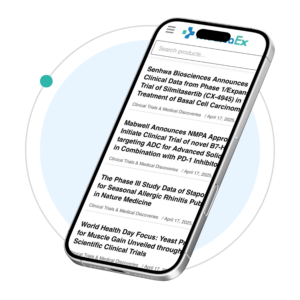Pressure injuries affect millions of people worldwide, extending the length of hospitalisations, causing severe pain, discomfort, as well as financial burden on patients and their families. Although there exists current prevention initiatives, pressure injuries still remain a very concerning health problem, with more than 400,000 cases in Australia every year (1), with the number of incidents expected to grow in the coming years (2).
Existing PI Prevention Strategies
Current practices have been shown to be effective in reducing the occurrence of pressure injuries, but these practices are not used systematically in all hospitals. According to the Australian Commission on Safety and Quality in Healthcare, current PI prevention strategies include monitoring and repositioning patients regularly, managing pressure/friction, and controlling nutrition and hydration (3) – which mostly need to be done manually and regularly by the nurses.
The available and recommended protocols provided require a lot of time and effort from healthcare workers that initially already have such heavy workloads. As a result, the current strategies are sometimes still hard to implement by the nurses. According to a study published in BMC Nursing, 98% of the nurses that participated reported that they had a negative attitude about the standard PI prevention protocol, mostly due to the heavy workload, inadequate staff, and shortage/inadequate devices and equipment (4).
Some of the current technology used to aid in the current PI prevention protocol include the use of dynamic air mattresses. Dynamic air mattresses are used to prevent PI by circulating air cells in a specific motion to deflate and inflate the mattress and relieve pressure on the body. Dynamic air mattresses may be a step forward in comparison to the historic pressure injury protocols, however they also come with various cons. This includes a generic timer-based rhythm to which pressure is relieved, not taking into account specific patient positioning or patient areas of concern. In comparison, LenexaCARE is able to detect and monitor the patient’s position over time whilst pinpointing the areas of highest relative pressure, therefore, a nurse or caregiver is able to work smarter and adjust the patient according to their own level of mobility and risk profile.
It’s a common misconception that you can simply place patients on an air mattress and you no longer need to do regular turning and repositioning. According to the International Pressure Injury Guidelines, there is a lot more to do. The International Guidelines as set by EPUAP, NPIAP and PPPIA suggest that the patient should be repositioned regardless of any technology used. The patient should have an individual and customised repositioning regime (5), something that the LenexaCARE system facilitates.
LenexaCARE
In a tweet by @DrKate_Miller, she writes “Today I have seen pressure injuries I’ve not seen in ten years,” alluding to the fact that pressure injuries are on the rise. Nurses in the comments have banded together to come to some sort of explanation to this rise, with multiple nurses saying it’s due to “resources” and “not enough nurses,” with ultimately the majority agreeing that “Pressure injury prevention is key to making sure we protect and preserve optimal patient outcomes.”
Realising the significance of this issue, Lenexa Medical provides a solution to help healthcare workers, hospitals, and patients to further prevent pressure injuries from happening.
We have developed LenexaCARE – a patient-centred technology that utilises:
- In-built sensing capabilities
- Smart software for real-time monitoring
- Fabric-based sensor technology
- Personalised offloading strategies and timing
- Nurse call and facility integration
Why LenexaCARE?
Our technology will provide clinicians with non-subjective data to monitor patient position over time and indicate where the patient’s specific pressure areas are; effectively saving nurses’ time while providing accurate personalised data to enable early interventions and prevent pressure injuries from developing.
“This info would be useful as we don’t know how long patients have been in certain positions or how often they have turned.” – Nurse feedback at a clinical trial of our LenexaCARE technology.
An end-to-end solution, the technology not only has the potential to improve the quality of patient care, but could also become a cost-saving measure for Australia’s healthcare system.
Reference
Nghiem, S., Campbell, J., Walker, R.M., Byrnes, J., & Chaboyer, W. Pressure injury in Australian public hospitals: a cost-of-illness study. International Journal of Nursing Studies. (2022). https://doi.org/10.1016/j.ijnurstu.2022.104191
Team, V, Tuck, M, Reeves, J, et al. Pressure injury data in Australian acute care settings: A comparison of three data sets. Int Wound J. 2020; 17: 578– 586. https://doi.org/10.1111/iwj.13320
Australian Commission on Safety and Quality in Healthcare. Pressure Injuries. Hospital Acquired Complication. (2020). https://www.safetyandquality.gov.au/sites/default/files/2019-05/saq7730_hac_factsheet_pressureinjury_longv2.pdf
Etafa, W., Argaw, Z., Gemechu, E. et al. Nurses’ attitude and perceived barriers to pressure ulcer prevention. BMC Nurs 17, 14 (2018). https://doi.org/10.1186/s12912-018-0282-2
European Pressure Ulcer Advisory Panel, National Pressure Injury Advisory Panel and Pan Pacific Pressure Injury Alliance. Prevention and Treatment of Pressure Ulcers/Injuries: Clinical Practice Guideline. The International Guideline. Emily Haesler (Ed.). EPUAP/NPIAP/PPPIA: 2019.
Cleveland Clinic. Pressure Injuries (Bedsores). (2018). https://my.clevelandclinic.org/health/diseases/17823-pressure-injuries-bedsores






